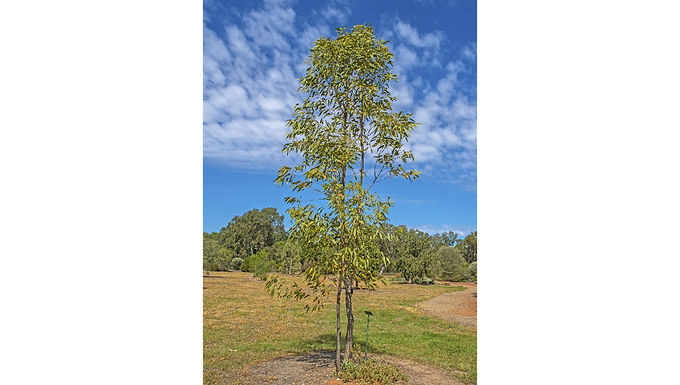BLOODWOOD
Corymbia terminalis
Plant Family
Myrtaceae
Alternative Common Names
tjuta, joolta, desert bloodwood, plains bloodwood, northern bloodwood, western bloodwood and inland bloodwood.


Tree that typically grows to a height of 18 metres. Forms a lignotuber - a woody swelling of the root crown grown as a protection against destruction of the plant stem, such as by fire. Rough bark on part or all of trunk, sometimes extending to the larger branches but not uncommonly on lower trunk only, patterned, light brown to light grey or, where patterned flakes have recently shed, reddish, pink or orange; bark of larger limbs may be rough or smooth; smooth bark whitish or cream. Wood used to make fence-posts, joists slabs and buildings as well as for firewood.
Leaves - adult ones are arranged alternately, the same shade of grey-green on both sides, lance-shaped, 80–200 mm long and 12–30 mm wide.
Flowers - buds are arranged on the ends of branchlets on a branched peduncle 5–20 mm long, each branch of the peduncle with seven buds on pedicels 2–13 mm long. Mature buds are scurfy, oval to pear-shaped, greenish to brown or cream-coloured. Flowers are white.
Fruit - woody urn-shaped capsule. The seeds are light brown or reddish brown, 9–12 mm long with a wing on the end.
Flowering March to October.
Indigenous uses - the exudate from the trunk or branches was diluted and used as an antiseptic treatment of facial cuts and sores. Larger leaves were useful for staunching wounds. The red bark kino can be stripped from the tree and mixed in water, then consumed for diarrhoea as well as for indigestion and chest pain. The wood from the tree was used to make spear-throwers, digging bowls and carrying vessels.
Habitat
The tree typically grows on river flats, scree slopes and dune swales. It prefers well drained soils and is both drought and frost tolerant.
27